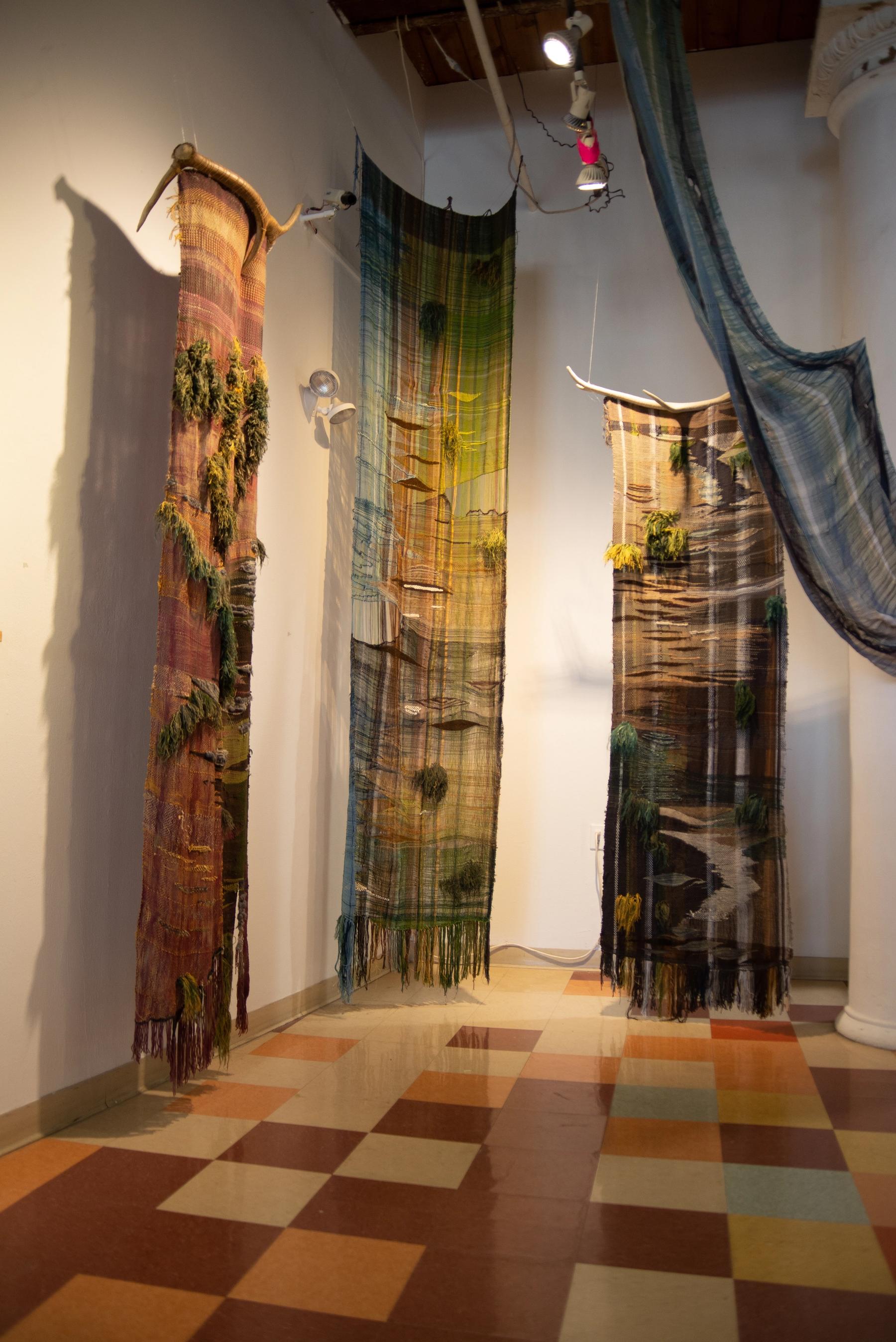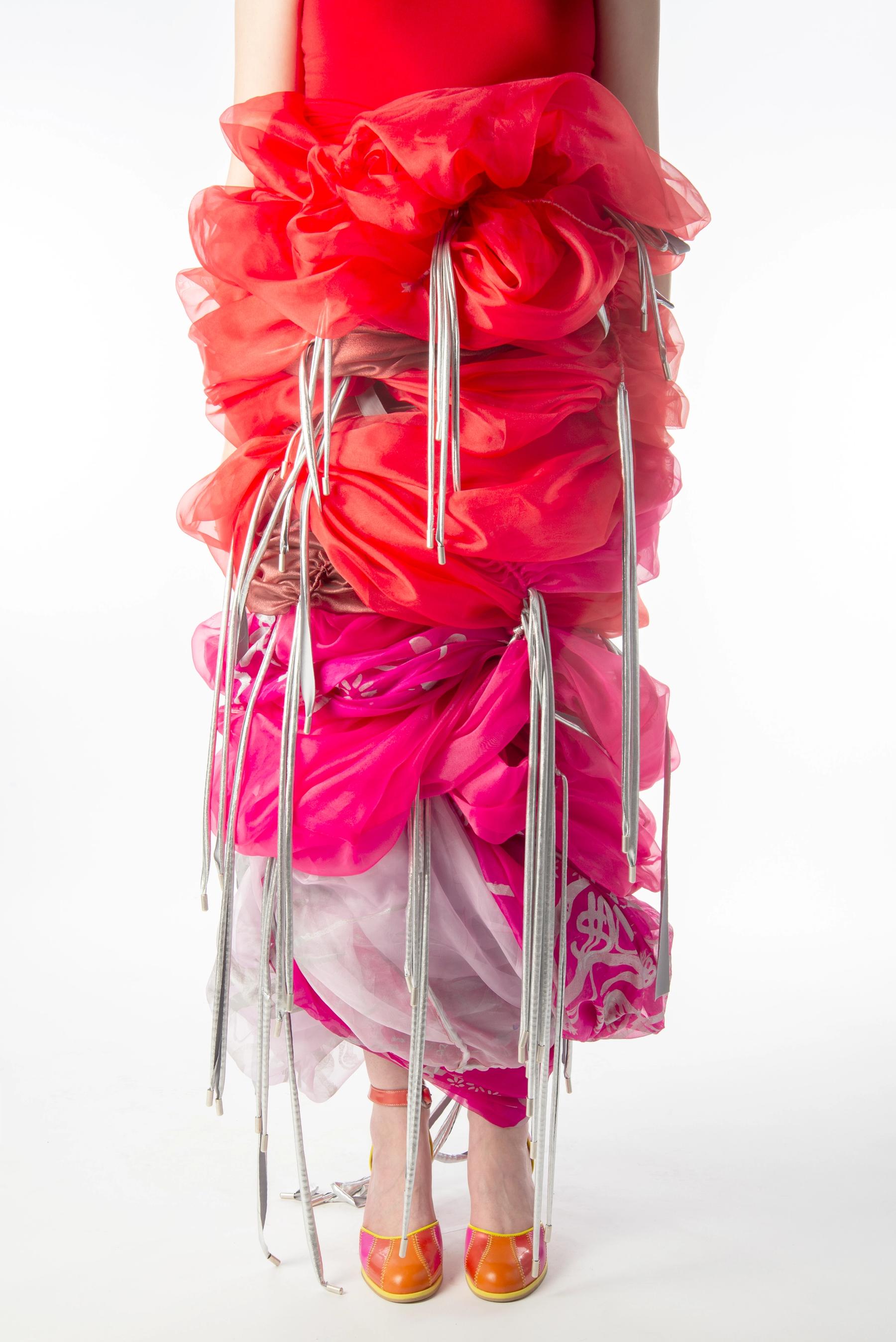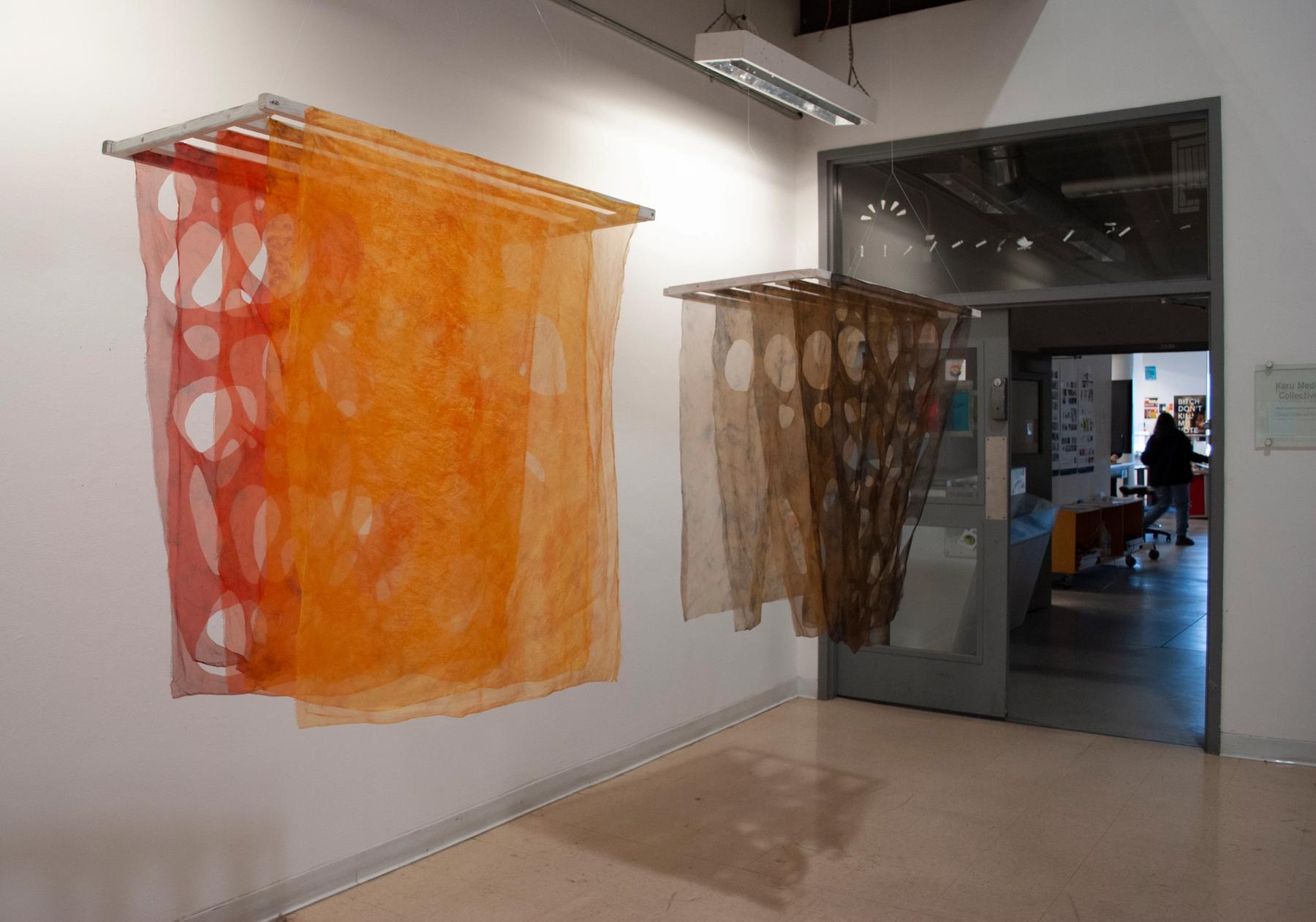Areas of Study
Bachelor of Fine Arts in Textile & Fashion Design
Textile & Fashion Design Program Description
In the Textile & Fashion Design major, you will create fabrics from the ground up and build works of art both on and off the body. Students study areas of textile expertise, including weaving, knitting, textile printing, and dyeing, while developing a deep understanding of professional fashion techniques such as draping, drafting, garment design, construction, and collection development.
In Textile & Fashion Design, you’ll join students interested in becoming engaged makers through an inclusive study of history, sustainability, and materiality. You get to develop the direction of your study throughout the major, whether that path leads you to designing garments, knitwear, weaving, textile design, textile art, or all of the above.
Through access to professional facilities and internship opportunities, you’ll hone these professional skills while developing a unique body of work.
Life After Graduation
Textile & Fashion Design majors learn to be hands-on makers with active problem-solving skills in fiber materials and garment design. During their education, students identify their areas of interest and build a portfolio of work to support their unique career goals. With professional skills in fashion and textile design, alumni can work as knitwear designers, technical designers, weavers, costume designers, printed textile designers, textile artists, or independent fashion entrepreneurs.
Gallery






















Program & Outcomes
Faculty
Textile & Fashion Design Faculty
Sample Courses
- TF 101 Introduction to Textiles
- TF 102 Introduction to Fashion and Apparel
- TF 201 Machine Knitting
- TF 202 Textile Printing
- TF 215 Weaving
- TF 325 Collection Development
Workspace & Tools
The Textile & Fashion Design program comprises three interconnected studios featuring floor-to-ceiling windows and professional equipment for creating textiles and garments. Equipment includes industrial sewing machines, sergers, dress forms, floor looms, knitting machines, drafting tables, textile printing tables, industrial induction cooktops, a darkroom, and a programmable embroidery machine.
Textile & Fashion Design majors in the third and fourth year also share a collaborative studio space that provides access to desks, additional industrial sewing machines, drafting tables, looms, and knitting machines for their personal use.
Learning Outcomes
Students will:
- Understand surface design fundamentals and the properties and uses of fibers, textile techniques, and structures.
- Demonstrate an understanding of color, pattern development, and the expressive qualities of texture and materials.
- Demonstrate knowledge of the human form as a kinetic 3D armature.
- Understand the scale of garments in relation to the body.
- Understand the evolution of apparel academically and experientially as they relate to the body.
- Employ the expressive nature of textiles as they relate to the human form in the development of a personal concept.
- Demonstrate mastery of industrial sewing machines, single and double bed knitting machines and linkers, dye lab equipment, fabric silkscreen print studio equipment, and supporting computer programs.
- Demonstrate professional practices within the field of textile and fashion design.
- Employ knowledge about the history of textile and fashion design, contemporary theories, and practice in their work.
- Speak critically about the textile and fashion design work of others from both historical and contemporary perspectives.
Course of Study
Foundation Year
Fall
- FN 101 Digital Imaging
- FN 109 3D: Materiality
- FN 113 Two-Dimensional Design
- Studio Elective
- EN 100 English Composition
- SEM 100 First Year Seminar
Spring
- DR 100 Introduction to Drawing
- FN 110 4D: Space & Temporality
- FN 108 Research & Inquiry – Studio
- SEM 108 Research & Inquiry – Academic
- AH 101 Art History Survey I
Sophomore
Fall
- TF 101 Introduction to Textiles
- TF 102 Introduction to Fashion and Apparel
- Studio Elective (Student Choice)
- AH 102 Art History Survey II
- Academic Elective
Spring
- TF 321 Draping & Construction
- TF 351 History & Context: Fiber and Fashion
- Studio Elective (Student Choice)
- AH 250 Critical Approaches to Contemporary Art
- Academic Elective
Junior
Fall
- TF 322 Advanced Pattern Drafting & Construction
- SEM 354 Junior Seminar – Craft Topics/Practice
- Approved Studio Elective
- Art History Elective
- Academic Elective
Spring
- TF 325 Collection Development
- Approved Studio Elective
- Studio Elective (Student Choice)
- Art History Elective
- Academic Elective
Senior
Fall
- TF 421 Advanced Projects in Textiles or Fashion
- SEM 451 Professional Studio – Craft
- Approved Studio Elective
- 2 Academic Electives
Spring
- TF 422 Majors Thesis Studio (6 credits)
- SEM 452 Senior Synthesis
- 2 Academic Elective
Course Catalog Listing
Textile & Fashion Design Program FAQ
What is a textile and fashion design degree?
A textile and fashion design degree prepares students to create original fabrics, garments, and wearable art. Maine College of Art & Design’s hands-on program combines technical skills like weaving, dyeing, and garment construction with design theory and historical context to develop creative, industry-ready designers.
What’s the difference between textile design and fashion design?
Textile design focuses on creating original fabrics through techniques like weaving, knitting, and printing. Fashion design applies those materials to garment creation through draping, drafting, and construction. This program combines both areas for a well-rounded education.
What do you learn in a fashion and textile design program?
In a fashion and textile design program, students learn to design and construct garments, develop original textiles through weaving, knitting, dyeing, and printing, and explore the cultural and historical context of fiber arts. The curriculum also includes portfolio building and professional practice.
What can you do with a textile and design degree?
Graduates with a textile and design degree can pursue careers as fashion designers, textile artists, technical designers, costume designers, knitwear designers, or start their own fashion brands. The program builds both creative and professional skills to support a wide range of career paths.
Do I need a background in sewing or design to apply?
No prior experience is required. The program begins with foundational courses that teach core skills in textile and fashion design, allowing students of all backgrounds to build confidence and grow their creative voice.
Apply for Our BFA and Major in Textile & Fashion Design
Ready to start creating work that’s uniquely yours?
At Maine College of Art & Design, you’ll study textile and fashion design in a setting that encourages exploration, values materiality, and supports your voice as a maker. With access to professional studios, hands-on instruction, and a tight-knit creative community, you’ll graduate with a body of work that reflects your ideas — and the skills to bring them to life.
Take the first step toward a future shaped by creativity, craft, and purpose.





